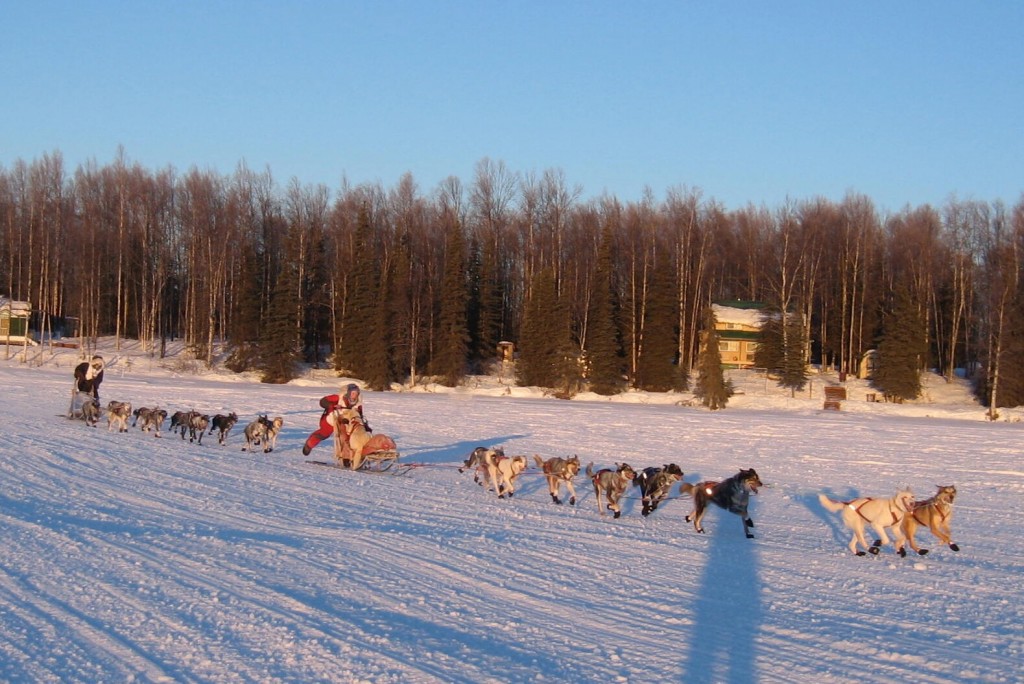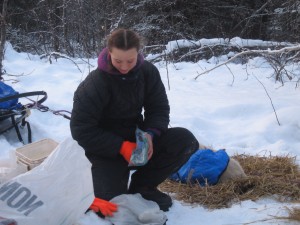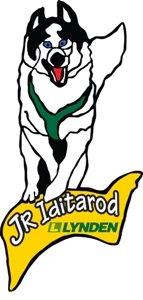 Ask me when Iditarod begins and I’ll reply, “The last Saturday of February.” Some ardent Iditarod fans might attempt to set me straight with, “Don’t you mean the first Saturday of March?” But no, I stand firm. Iditarod begins with the Junior Iditarod and that happens the last weekend of February. The young mushers that run the 150-mile junior race are the future of Iditarod as well as the sport of mushing.
Ask me when Iditarod begins and I’ll reply, “The last Saturday of February.” Some ardent Iditarod fans might attempt to set me straight with, “Don’t you mean the first Saturday of March?” But no, I stand firm. Iditarod begins with the Junior Iditarod and that happens the last weekend of February. The young mushers that run the 150-mile junior race are the future of Iditarod as well as the sport of mushing.
Take time on the worst weather day of the year when an Internet search is as close to going outside as you want to get and compare the archives of the Junior Race and the Iditarod. Of the 66 mushers who went to the start at Willow for the 2013 Iditarod, at least eleven had previously participated in the Junior Iditarod. Looking at the list of mushers heading to the start in 2014, there are nine who’ve made the run out to Yentna Station Roadhouse and back as Juniors. The list includes but isn’t limited too (just in case I didn’t count quite right), Travis Beals, Aaron Burmeister, Jason Mackey, Wade Marrs, Cim Smyth, Ramey Smyth, Ray Redington Jr. and Dallas Seavey.
This February will mark the 37th running of the Junior Iditarod. The Junior, just like the Iditarod began as a dream. It was Joe Redington who dreamed of a long distance race across Alaska to commemorate the place of the sled dog in the history of Alaska. It was Eric Beeman who dreamed of a distance race for young mushers to help prepare them for the “Big Iditarod.” Beeman shared his dream with his young mushing friends while on winter camping trips with their dogs. As the young mushers sat around the campfire listening to Eric’s idea of their own junior sized Iditarod, the concept grew in their minds and took on energy of its own.
 There was a lot of knowledge out there about sprint and speed racing but not so much about longer distances. The Iditarod was only a few years old and was taking enormous time and energy to stay solvent. The folks working hard on the “big one,” had little if any time to lend to a junior race or to help the kids learn about distance racing. When the kids themselves brought Beeman’s dream to Joe Redington, he like others was intrigued and supportive of the idea and offered encouragement. The kids carried Joe’s words, “Go for it,” in their hearts as a blessing to continue the pursuit of their dream. With the help of parents and other mushing enthusiasts, Eric’s dream has developed into a first class junior mushing event. Seems to me that Joe Redington and Eric Beeman, both dreamers, must have been cut from the same cloth.
There was a lot of knowledge out there about sprint and speed racing but not so much about longer distances. The Iditarod was only a few years old and was taking enormous time and energy to stay solvent. The folks working hard on the “big one,” had little if any time to lend to a junior race or to help the kids learn about distance racing. When the kids themselves brought Beeman’s dream to Joe Redington, he like others was intrigued and supportive of the idea and offered encouragement. The kids carried Joe’s words, “Go for it,” in their hearts as a blessing to continue the pursuit of their dream. With the help of parents and other mushing enthusiasts, Eric’s dream has developed into a first class junior mushing event. Seems to me that Joe Redington and Eric Beeman, both dreamers, must have been cut from the same cloth.
Five years after the inaugural Iditarod, the juniors had their own Iditarod. It looked quite different than the Junior Iditarod known today. In 1978, the first year of the Junior, there were two divisions of mushers. The senior division contestants, ages 15 to 17, ran 10 dogs for a distance of 40 miles including an overnight camping layover at Nine Mile Hill. Incidentally, that was where Eric and friends were camped with their dog teams when he shared his dream of a distance race for young but aspiring Iditarod mushers. The junior division, ages 11 to 14, ran 6 dogs for a distance of 18 miles in a one day event.
The next year the race was changed to only one division, ages 14 to 17, running 90 miles with a maximum of ten dogs including a required overnight layover for all. At the age of three, the distance of the Junior Iditarod jumped to 120 miles running from Knik Lake to Point McKenzie On the fifth running of the race, the layover was moved to the Yentna Station Roadhouse where it has been ever since except for 2003. Just as the “Big One” was required to re-route with the start in Fairbanks due to lack of snow and unsafe river conditions, so was the Junior. A couple of weeks before the 2003 start, the Board of Directors made the decision to move the Junior race to Glennallen, running a 150 mile loop from the Wolverine Lodge to Sourdough on the Richardson and back. The majority of the Junior Iditarod races run in the past 30 years, the mushers have covered a distance of about 150 miles.
 Of the past Junior Iditarod races, six mushers have won in consecutive years. Winning three Junior Iditarod races in a row was Tim Osmar – 82, 83 & 84. Back to back winners include Lance Barve in 85 & 86; Jared Jones in 89 & 90; Ramey Smyth in 92 & 93; Dusty Whittemore in 95 & 96 and Ryan Redington in 99 & 2000. Books about the Junior Iditarod are few and far between but Ted Wood tells Dusty Whittemore’s story in Iditarod Dream.
Of the past Junior Iditarod races, six mushers have won in consecutive years. Winning three Junior Iditarod races in a row was Tim Osmar – 82, 83 & 84. Back to back winners include Lance Barve in 85 & 86; Jared Jones in 89 & 90; Ramey Smyth in 92 & 93; Dusty Whittemore in 95 & 96 and Ryan Redington in 99 & 2000. Books about the Junior Iditarod are few and far between but Ted Wood tells Dusty Whittemore’s story in Iditarod Dream.
In the big picture, the boys have dominated the winner’s circle of the junior with twenty-nine champions while the girl’s have claimed seven victories. Comparing that to Iditarod’s list of female Champions, females (Christine Delia, Cali King, Ellie Claus, Nicole Osmar, Melissa Owens, Jessica Klejka and Marissa Osmar) have won 19% of the Junior Iditarod races while females (Libby Riddles and Susan Butcher) have won only 12% of the “Big Ones.”
Of the thirty-six Junior Iditarod finishes, there have been a handful of really close ones. In 1993 brothers, Ramey and Cim Smyth raced to the finish line with Ramey claiming the victory by just thirty-four seconds to defend his championship of the previous year. In 2001, thirty-four seconds was again the margin of victory as Tyrell Seavey sprinted beside his team to the finish line just ahead of Cali King. These were close but the closest finish was in 2008. Jessica Klejka dropped down onto Willow Lake just a yard or two ahead of Cain Carter. With both teams on the lake and within a quarter mile of the finish banner, Cain urged his dogs to pass, “ON BY, ON BY!” Jessica urged her team to give it their all, “HIKE! HIKE! HIKE!” Cain and team closed the gap as they overtook Jessica’s sled and her wheel dogs. Jessica’s dogs were not to be denied, they added a little more steam and maintained their lead of half a dog team to claim victory by just TWO seconds! I looked into the eyes of the canine athletes as they crossed the lake, they knew what was at stake and they were every bit as competitive as their young drivers. It was a photo finish equally as exciting as the year Dick Mackey bested Rick Swenson by one second in Nome. Yes, it is the nose of the lead dog that determines the finish.
 Before the days of Internet and Iditarod Insider, many dedicated Iditarod fans recall staying up late to view ABC’s WILD WORLD OF SPORTS to get first hand Iditarod race reports. In 1992, the fifteenth anniversary of the Junior Iditarod, ABC video taped the Junior and aired a half hour program featuring the teenage mushers and their accomplishments along with the trail, the layover at Yentna Station Roadhouse and the race in general. That year, temperatures ranged between three degrees and twenty degrees above zero making for a hard fast trail. Ramey Smyth of Big Lake won the race in 10 hours 19 minutes and 51 seconds. Second place went to brother, Cim. Thomas Krejci of Brno Czechoslovakia, the first international entry of the Junior Iditarod, won the Humanitarian award. Brian Hanson of Anchorage won the Sportsmanship Award. Sheep Creek musher, Will Baron’s dogs, Be Be and Woofer, received the Blue Harness Award.
Before the days of Internet and Iditarod Insider, many dedicated Iditarod fans recall staying up late to view ABC’s WILD WORLD OF SPORTS to get first hand Iditarod race reports. In 1992, the fifteenth anniversary of the Junior Iditarod, ABC video taped the Junior and aired a half hour program featuring the teenage mushers and their accomplishments along with the trail, the layover at Yentna Station Roadhouse and the race in general. That year, temperatures ranged between three degrees and twenty degrees above zero making for a hard fast trail. Ramey Smyth of Big Lake won the race in 10 hours 19 minutes and 51 seconds. Second place went to brother, Cim. Thomas Krejci of Brno Czechoslovakia, the first international entry of the Junior Iditarod, won the Humanitarian award. Brian Hanson of Anchorage won the Sportsmanship Award. Sheep Creek musher, Will Baron’s dogs, Be Be and Woofer, received the Blue Harness Award.
 A volunteer for the Junior Iditarod since before the very first race has this to say about the teenagers who compete in the Junior Iditarod, “The kids have astonished me year after year by their abilities, and dedication to the race, their dogs, good judgment, maturity, resourcefulness, sportsmanship, and preparedness, to name but a few of their attributes.”
A volunteer for the Junior Iditarod since before the very first race has this to say about the teenagers who compete in the Junior Iditarod, “The kids have astonished me year after year by their abilities, and dedication to the race, their dogs, good judgment, maturity, resourcefulness, sportsmanship, and preparedness, to name but a few of their attributes.”
As a sponsor of the Junior Iditarod, Lynden Air Cargo awards scholarships to the top five finishers. Ethan Bradford of Lynden says, “Lynden’s primary purpose is to support the education of these junior mushers and in turn the Junior Iditarod. Lynden believes that the Iditarod is a very important aspect of Alaskan culture and heritage and needs to be preserved for future generations.”
Follow the Junior Iditarod, meet the mushers, learn about the history, check the archives, enjoy photos and read Junior Iditarod news at www.jriditarod.com.
